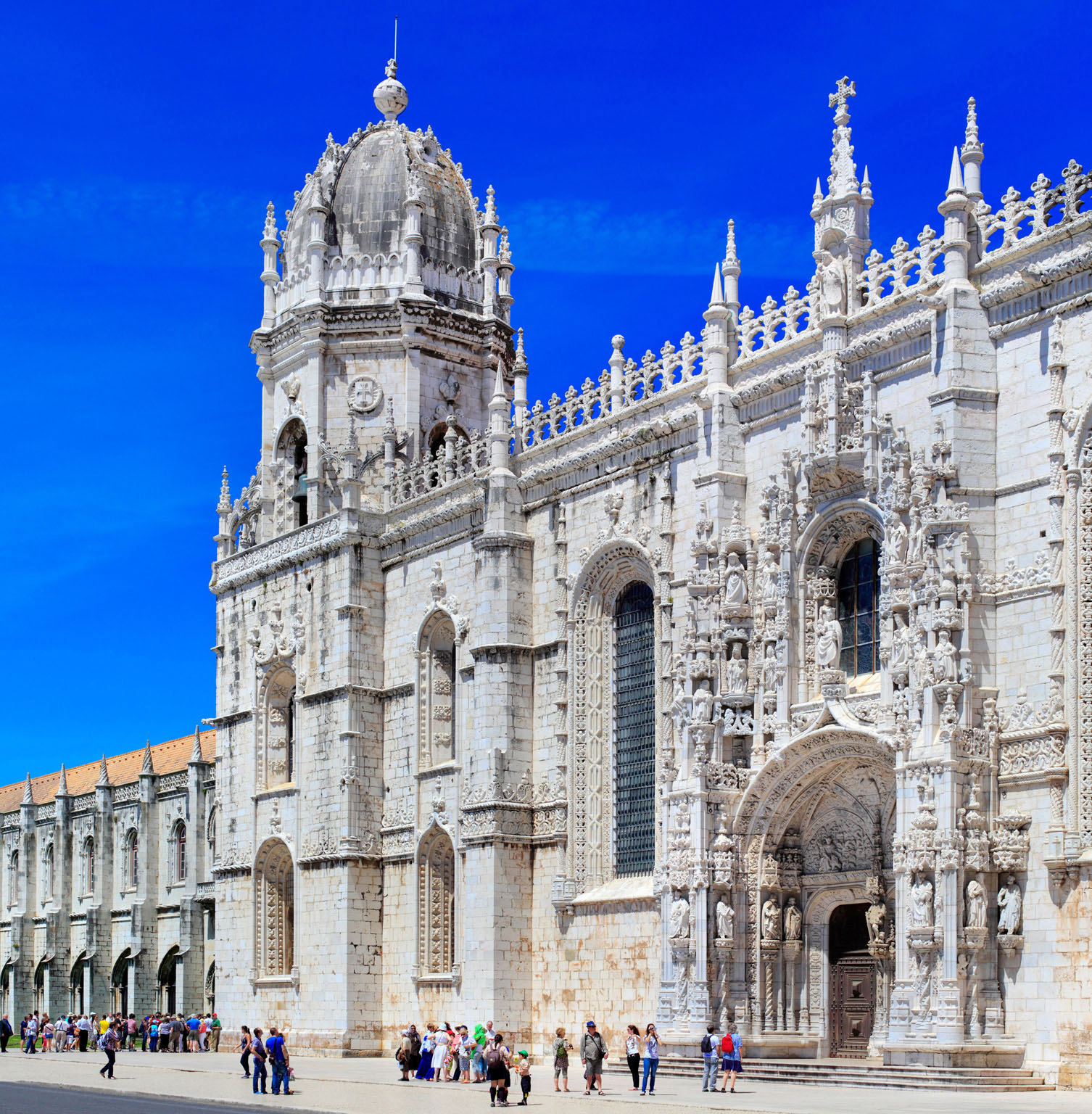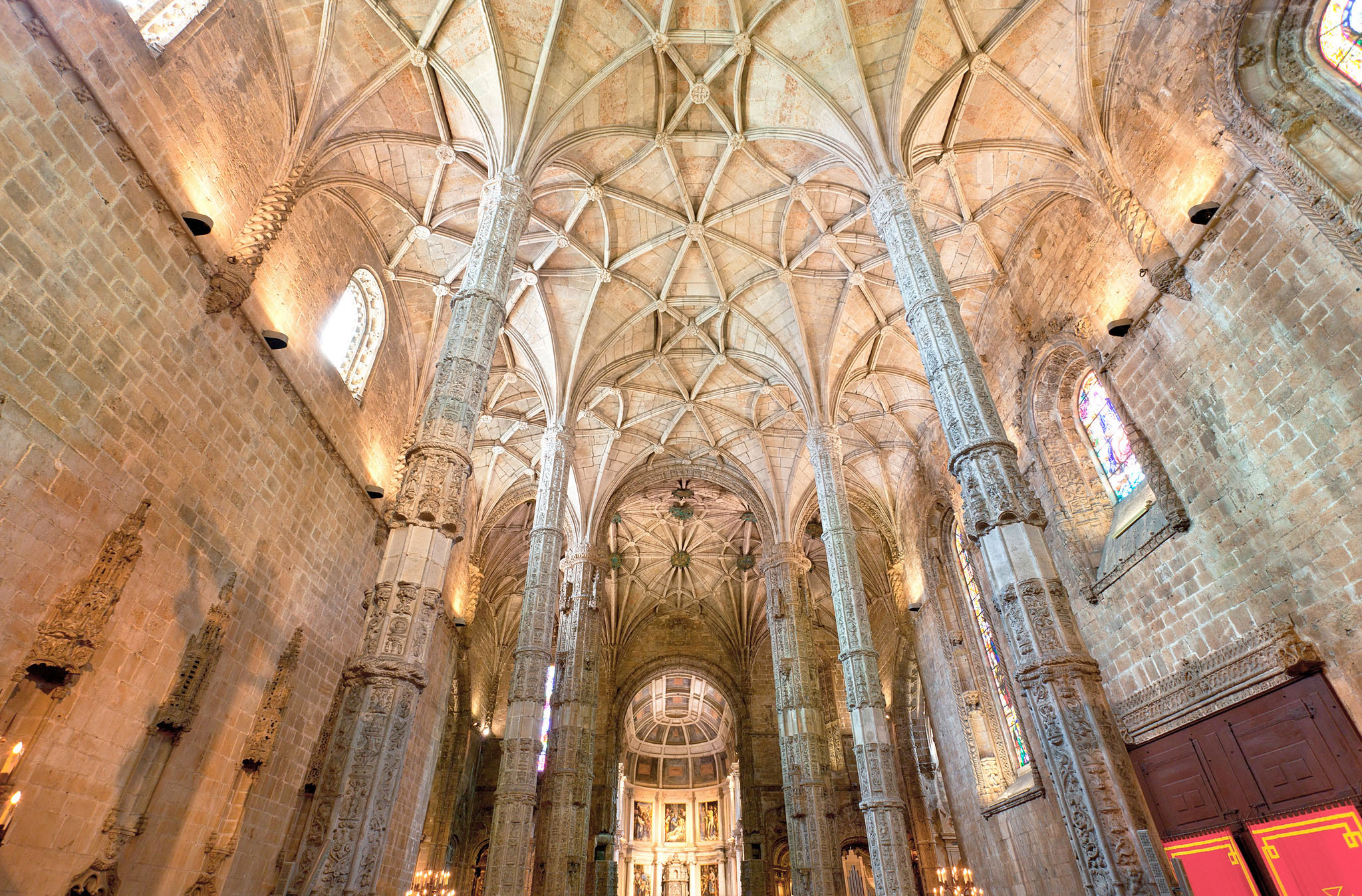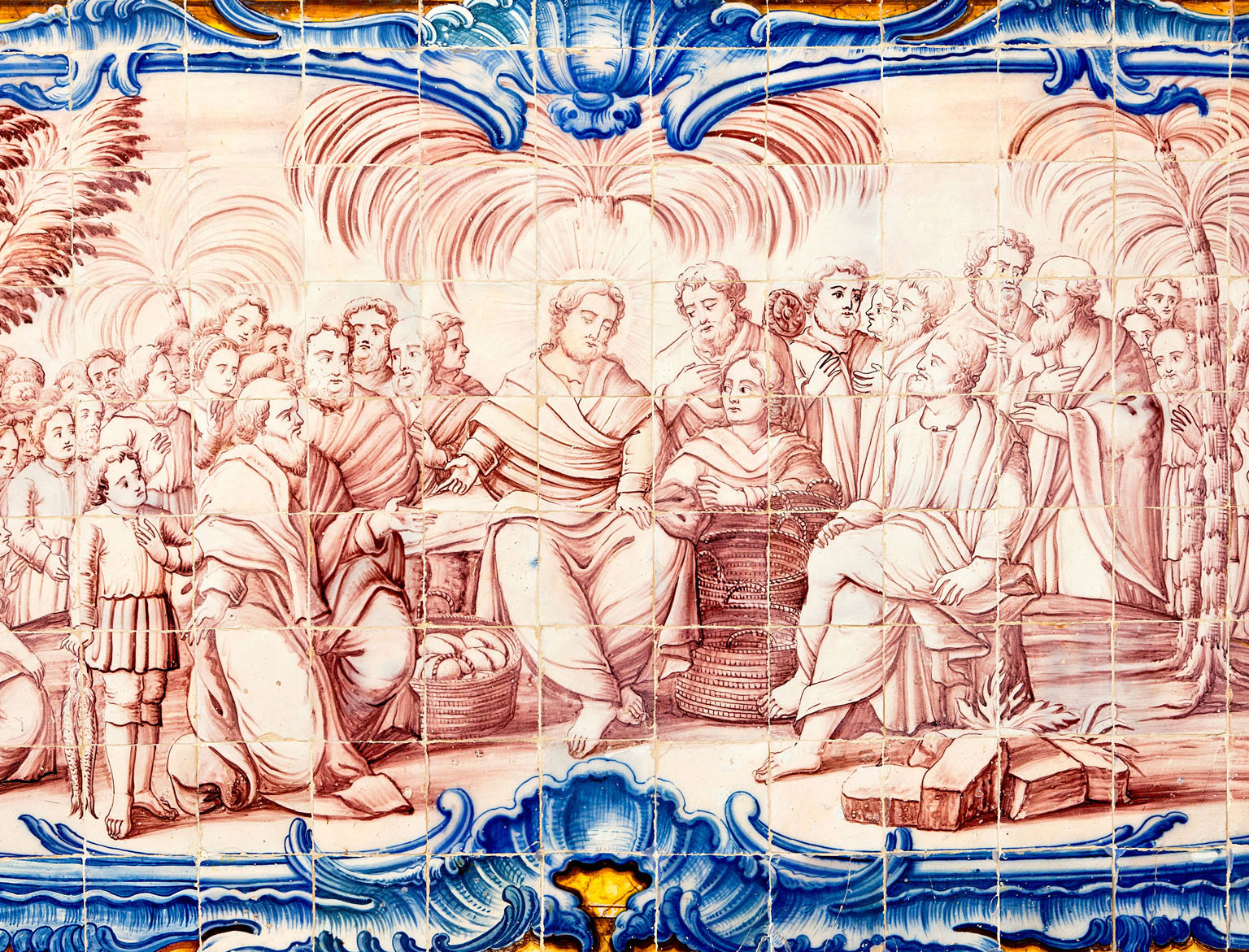
MOSTEIRO DOS JERÓNIMOS
Few of Lisbon’s monuments are overly grand, and while this historic monastery is imposing, its proportions remain accessible. Begun in the early 16th century by Diogo de Boytac and finished by João de Castilho and Jerónimo de Ruão, Jerónimos symbolizes Portugal’s territorial expansion and expresses a uniquely national style. It’s also a monument to Portuguese identity, housing tombs of men who helped make the country great, including navigator Vasco da Gama, Dom Sebastião, and poet Luís de Camões.
NEED TO KNOW
![]() Praça do Império, Belém • 213 620 034 • www.mosteirojeronimos.gov.pt • Open 10am–6:30pm (5:30pm Oct–Apr) Tue–Sun. Closed Jan 1, Easter Sun, May 1, Jun 13, Dec 25 • Adm $12.50; reduced $6; under 12 free
Praça do Império, Belém • 213 620 034 • www.mosteirojeronimos.gov.pt • Open 10am–6:30pm (5:30pm Oct–Apr) Tue–Sun. Closed Jan 1, Easter Sun, May 1, Jun 13, Dec 25 • Adm $12.50; reduced $6; under 12 free
- This is one of the most visited sites in Lisbon. Think twice before going on weekends, mid-mornings, or mid-afternoons (the latter two are favored by tour groups). Hit it at lunchtime, or just before it closes, when the stone turns honey-colored.
- After your visit, grab a bite to eat at nearby Cais de Belém (Rua Vieira Portuense 64), and dine overlooking Jardim de Belém.

Monastery Floor Plan
1. South Portal
Restraint might not be the word for this towering sculpture of an entrance, but look closely and you’ll see that none of its parts is overpoweringly large. The figures include Henry the Navigator.

South Portal
2. Nave
Many visitors find the well-lit nave the most striking feature of Jerónimos, with its soaring carved pillars supporting a beautiful fan-vaulted ceiling.

Nave
3. West Portal
The surrounds of this portal (now the main entrance) were sculpted by Nicolau Chanterène, and show the Manueline love of fantastical Renaissance decoration.
4. Cloister
The unique two-story cloister is a lesson in Manueline tracery and lavish ornament. Fernando Pessoa, the renowned poet, is buried in the cloister.

Cloister
5. Refectory
The long, narrow refectory features fabulous vaulting and ropelike Manueline moldings. The panel on the north wall depicts the biblical story of the feeding of the 5,000.

Refectory
6. Tombs of Dom Sebastião and Cardinal D. Henrique
As you pass under the stellar vault of the crossing, look to each side to see the grand tombs of Cardinal D. Henrique and the young king Dom Sebastião.
7. Chapterhouse
Completed only in the 19th century, the attractive chapterhouse was never used as such. It houses the tomb of Alexandre Herculano, a celebrated 19th-century historian who also served as the first mayor of Belém.
8. Main Chapel
The current main chapel, dating from 1572, has a gridlike Mannerist layout. Look out for the tombs of Dom Manuel I and his wife Dona Maria (on the left) and Dom João III and his wife Dona Catarina (on the right).
9. Extension
Major restoration and extension works in the 19th century added the long Neo-Manueline west wing, which now houses the Museu de Arqueologia and part of the Museu de Marinha (Praça do Império). A distinctive domed bell tower was built to replace the previous pointed roof.
10. Tombs of Vasco da Gama and Luís de Camões
In the Lower Choir—facing the aisles under the gallery—are the tombs of Vasco da Gama and Luís de Camões, transferred here in 1898.

Tomb of Vasco da Gama
STONE SURPRISES
Spend some time studying the carvings on the pillars in the nave and you will come across exotic plants and animals, along with exquisite human faces, and a few mythical figures. What better way to remind posterity that all this beauty was hewn by human hands, belonging to individuals who might occasionally let their imaginations roam free while carving.
